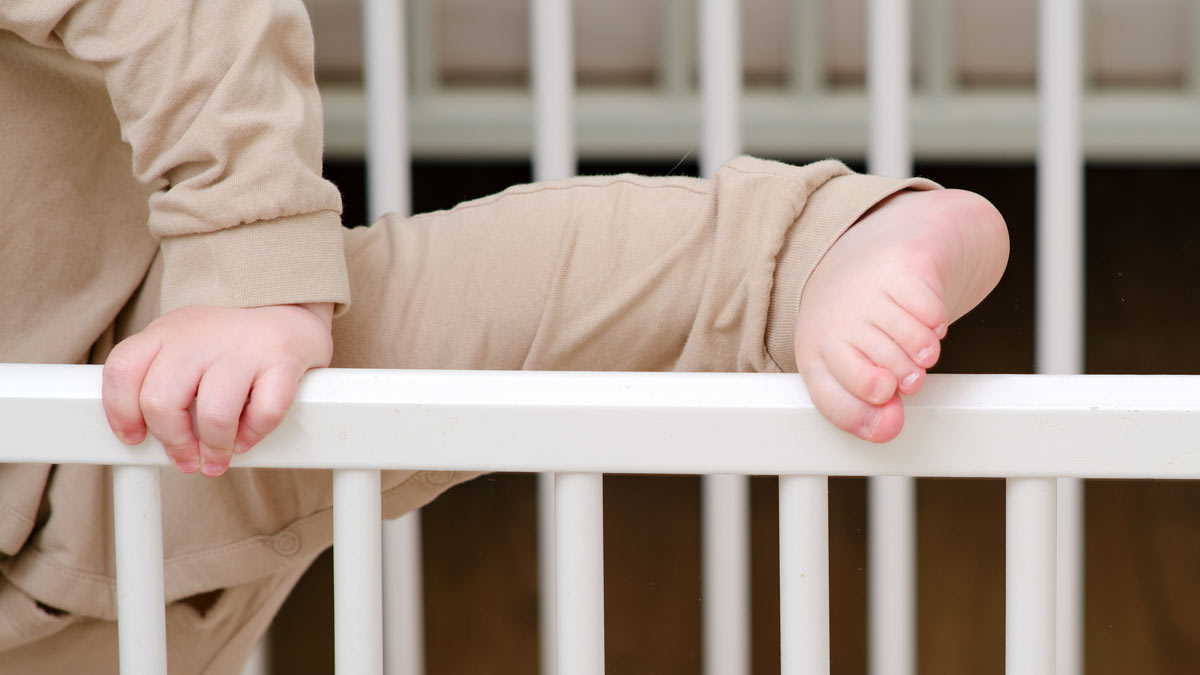Sleep tents are often used by parents for travel. They’re large enclosures designed to contain a crib, as opposed to a crib tent, which attaches directly to the top of a crib. SlumberPod is a popular brand.
Sleep tents are “a variation on the crib-tent theme and are designed to be placed over a crib or portable crib/playpen and often used for travel to provide a dark environment in hopes of helping a baby sleep better while away from home,” says Caroline Brown, MD, who practices general pediatrics at the Children’s Clinic of Winston-Salem in North Carolina.
I came across the SlumberPod when my family was embarking on our first vacation with our kids to Walt Disney World. It would be the first time we all shared a hotel room. My husband and I worried—as parents tend to do when experiencing an unknown first—about how well our kids would sleep in a new environment. We also wondered if the shared space meant we would be forced to go to bed early with them.
I asked some fellow parents how they handled a similar situation and soon heard all about the SlumberPod. Sarah Husband, a mother of two young children who lives with her family in New Hampshire, first heard about the product from a well-known parenting content creator on social media. “We can still make naps a priority and make early bedtimes work,” she said about using the SlumberPod. “I actually enjoy staying in a hotel room with my kids because I get some downtime after they go to bed and can still use an iPad to watch TV or hang out in the room” without disturbing their sleep. She said the product was easy to travel with because it could fit in a suitcase.
But are sleep tents safe? There are no active recalls for the SlumberPod. But in 2012 the CPSC announced a recall of small, tent-style travel beds, the PeaPod and the PeaPod Plus Travel Bed, after they were associated with several safety incidents, including one death. The PeaPod, which has an inflatable mattress base, was intended for use as a freestanding sleep environment but was found to present a risk of suffocation and entrapment.
SlumberPods, by contrast, are intended to enclose a travel crib or other safe sleep environment rather than serve as a sleep environment on their own. “They’re generally considered safe because they go over the entire crib or play yard,” Casares says. “They can be a helpful tool for families who need to create an environment more conducive to sleep when traveling or in other less-than-ideal scenarios.”
In my own research, the main concerns that popped up with the SlumberPod were overheating and ventilation. My kids run hot, so I worried that my toddler would get too hot and sweaty inside the black fabric tent. Husband had the same concern when she first looked at the SlumberPod: “Our only concern . . . was airflow and ventilation,” she says. “[But] the fabric is breathable, and there are flaps you can open. We put a fan near it if it is warm when [our son] is using it.”
Currently, there have been no reported safety incidents associated with the product. SlumberPods “are not attached to a crib and therefore supposedly pose less risk per the manufacturer,” Brown says. But “sleep experts still caution against their use for concerns about possible entrapment and/or overheating for young infants.” The manufacturer recommends the SlumberPod be used only for children ages 4 months and up, and only with a safe sleep environment like a play yard or mini crib.
